Blog
How to Thrive in the Never Normal: Key Takeaways from the Digital Growth Summit 2023
On September 26th, Brussels was the place to be for media innovation as the 6th Twipe Digital Growth Summit (DGS) brought together global media innovators.
Over 150 participants attended DGS 2023, featuring industry leaders’ keynotes and hands-on sessions. At the conference, publishers discussed their challenges in the constantly evolving media world. One of the key topics discussed was attracting and involving audiences of all ages, from boomers to Generation Alpha.
Renowned author and innovator Peter Hinssen and other eminent speakers delved deep into the challenges and opportunities of a rapidly changing industry. Looking back, DGS 2023 gave us many insights concerning the news industry’s direction. Let’s explore some key takeaways in this blog post.

Peter Hinssen on how to reinvent ourselves in an ever-changing digital landscape
Peter Hinssen emphasises the unprecedented pace of change in today’s digital age, where transformation and disruption are becoming the norm. He underscores that companies, especially media ones, must focus on immediate challenges and potential future shifts as we constantly transition.

If you believe we are at the pinnacle of technological innovation, you are wrong.
Peter Hinssen
Generative AI as a complement to human-driven content: CEO panel

Amid a rapidly shifting media landscape, the CEO panel at DGS 2023, featuring Thomas Schultz-Homberg (CEO, KStA Medien) and Peter Quaghebeur (CEO, Mediafin), and moderated by Danny Lein (CEO, Twipe), highlighted the importance of innovation and adaptability for news publishers. While the continued relevance of print editions was acknowledged, with most publishers planning to wait before eliminating print, the challenge lies in balancing the demands of traditional readers with the emerging tech-savvy generation.
A pivotal point of discussion centred around generative AI, with its increasing role in news publishing. While AI is becoming a prominent tool, automating routine tasks and churning out articles, it’s not seen as a replacement for human journalists. Instead, it complements human-driven content creation.
To attract younger audiences and expand across different platforms, publishers increasingly need to use new ways to engage them, such as creating TikTok content or podcasts. The panel’s consensus was clear: Thriving in the modern era requires news media to be agile, embracing technology and evolving audience preferences, and paying attention to the differences between generations and consumption patterns.
AI in Newsrooms: Peter Soetens on Balancing Tech and Authenticity
Peter Soetens (CEO Technology, MediaHuis) illuminated the need for publishers like Mediahuis to proactively shape their AI strategy in the evolving digital landscape. Central to Mediahuis’ approach is maintaining control over content distribution, ensuring brand integrity, and advocating for policy consistency in the AI ecosystem.
By leveraging AI’s capabilities for tasks like article drafting, headline optimisation, and content enhancements without skipping human oversight, Mediahuis strives to elevate efficiency without diluting authenticity.
Soetens believes that it is essential for AI and journalism to work together in a way that stays true to the principles of quality reporting.

Ever-shifting media dynamics with Nic Newman
Nic Newman of the Reuters Institute of Journalism highlighted the evolving media dynamics, with younger audiences gravitating towards digital platforms over traditional media. Reading remains popular, but video and audio like podcasts are gaining popularity.
Newman also expressed concerns over the youth’s declining interest in the news due to its negative nature. Although such narratives have been shown to attract new subscribers, the decreasing interest shows the need to reconsider content strategies.

While social media has become an essential news source for 43% of these users, platforms like Facebook are losing ground to video-focused ones like YouTube, Instagram, and TikTok.
How to engage the next generation – Julie Lelièvre

When content is good, it performs well everywhere
Julie Lelièvre
Julie Lelièvre spotlighted how Le Monde, a historic journalistic pillar in France, has navigated the digital transformation to engage the younger generation. Central to this has been Le Monde‘s embrace of video content and its multi-platform approach, ranging from Instagram to podcasts.
Le Monde‘s adaptation of social platforms, tailored especially for the younger demographic, shows their commitment to retaining journalistic excellence while staying relevant in the digital age.
Engaging different generations in a changing media landscape: VRT’s strategy
For Belgium broadcaster VRT, their strategy indicates a commitment to genuinely understand and engage the younger demographic, explained Emilie Nenquin (Head of Data and Intelligence, VRT).
Their approach attempts to foster meaningful connections and expanding their reach to more readers. To establish a presence in digital platforms like Instagram, VRT created an account nws.nws.nws and focus on interactions beyond traditional news.
Our mission is to inspire people and broaden their taste.
Emilie Nenquin

VRT emphasises the importance of community-building, especially on social platforms.
Their presence on many different media channels, and by leveraging the recommendation algorithms, aims to inspire users and broaden their content consumption rather than reinforcing echo chambers. At the heart of VRT’s endeavours is a transformative mission: to deeply understand its audiences, inspire them, and adapt to them.
Liesbeth Nizet, Heino Schaght, and Michelle Brister led interactive deep dive sessions exploring Pricing, Generative AI, and Audience Engagement
Pricing with Liesbeth Nizet:
A poll was taken with the audience on pricing and bundles, with the majority of publishers in the room believing that they can go beyond the Netflix cost of ‘9.99’, and charge more for their services. Perhaps bundles are the way to achieve this.
Generative AI with Heino Schaght:
There were no surprises in the AI discussions, as it is on every publishers’ minds and all are at different points of experimentation. The key is to start as soon as possible before it is too late.
Audience Engagement with Michelle Brister:
The main challenges of audience engagement include:
- Ensuring data quality;
- Managing competition;
- Catering to diverse needs;
- Maintaining brand awareness.
To overcome these hurdles, adopting a multi-channel approach is imperative, creating concise content suitable for reduced attention spans, fostering two-way audience conversations, promoting brand flexibility, and investing in diverse teams and actionable insights from data.
Striking a balance between tradition and innovation: the experiences of Keskisuomalainen and SWMH
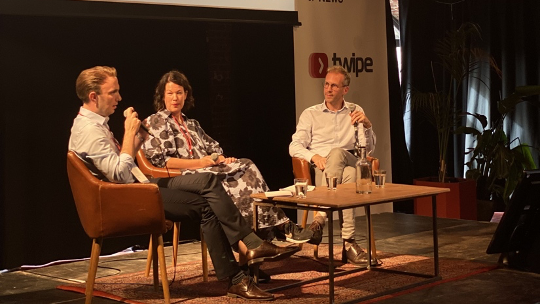
To succeed in today’s media landscape, publishers need a strategy that includes technical integration, understanding their audience, and delivering innovative content. It can be a complicated process, but it can be done successfully with the right approach.
Keskisuomalainen and SWMH have faced challenges, especially post-acquisitions, emphasising the need for seamless workflow and platform integrations. While both panellists Kirsi Hakaniemi and Gregor Zoller stress the significance of top-tier content, they also highlight technology’s role in refining their content strategies, particularly AI.
A recurrent theme throughout the discussion was the need to understand and cater to diverse audience demographics, ranging from the silver generation to younger millennials and Gen Z. Balancing in-house vision with strategic outsourcing further shapes their decision-making.
From tech to news media: Arist Von Harpe’s vision

During his talk with Dana Nastase, Arist von Harpe (CEO, Hamburger Morgenpost) shared how Hamburger Morgenpost (MOPO) uses new technology and still maintains core journalistic values in an ever-changing local news environment.
Social media is like nuclear energy – it has power, but it needs to be regulated.
A. Van Harpe
As MOPO is phasing out its daily print in favour of a weekly edition, it emphasises maximising audience reach by employing strategies like hyper-localised advertising.
MOPO’s approach to AI showcases a balanced vision where technology complements rather than replaces human roles. Using AI to automate routine tasks and enhance user experience, MOPO empowers journalists to produce more meaningful content.
Roularta and Twipe’s Digital Edition of the Future
Roularta, in partnership with Twipe, is pioneering the ‘Digital Edition of the Future’ – a project focused on curating personalised, topic-centric content that transcends traditional brand boundaries. This new strategy appeals to a younger audience who prefer following particular topics rather than relying on a specific newspaper.
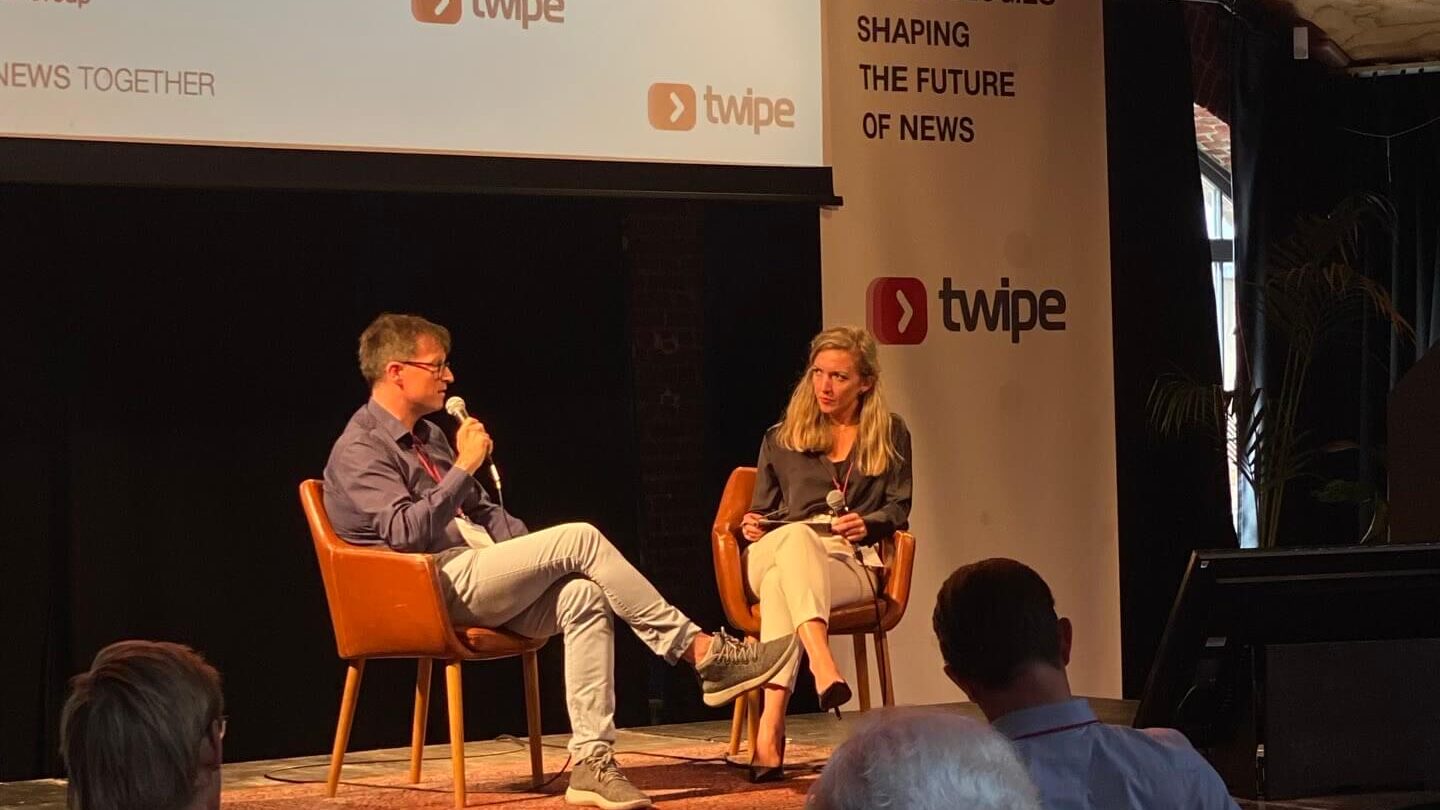
By introducing a multi-magazine brand aimed at families, implementing a subscription-sharing feature akin to Netflix, and recalibrating newsroom dynamics towards content ‘verticals’, Roularta seamlessly blends traditional brand loyalty with modern user preferences.
As they explore the challenges and opportunities of a multi-brand application, Roularta’s efforts highlight how people consume media and the growing need for flexibility and innovation that focuses on the audience.
Navigating the AI Dust Storm: Ezra Eeman
Ezra Eeman (Strategy and Innovation Director, NPO) highlighted AI’s increasing prominence and potential in the news and publishing world. The presentation identifies three primary roles it can play in the newsroom:
- Automation, such as metadata generation;
- Augmentation of current processes; and
- Transformation of news delivery.
It is reasonable to assume tech giants could dominate the AI landscape.
Media entities face the dilemma of safeguarding their content from AI-driven scraping or contributing to the AI training data ecosystem.

AI tools are now capable of summarising and altering content, shifting control towards readers and aggregators.
Although the ultimate value of AI in the publishing industry remains wavering, its potential hidden costs are undeniable. For immediate AI integration, Eeman recommends starting with enhancing non-customer-facing processes.
Human journalism might become a premium label in a digital world flooded with mediocre content.
Ezra Eeman
Digital Transformation with the Reader in Mind: Insights from Jean-Marc De Jonghe
Jean-Marc De Jonghe (VP Strategy & Digital Products, La Presse) emphasises the essence of a user-centric approach to digital transformation. Despite originating from a traditional newsprint background, La Presse‘s strategic pivot towards digital platforms prioritised genuine audience engagement and adaptability.
By investing in design thinking, monitoring meaningful metrics, and continuously refining user experience, La Presse shows the importance of being attuned to the readers’ evolving needs.
Their journey reiterates the significance of aligning technology with business goals, consistently iterating based on feedback, and recognising the profound revenue potential of deeply engaged users across various digital platforms.

Drawing from historical examples, tech trends, and AI advancements, Hinssen points out that organisations must continuously reinvent themselves to remain relevant. He stresses the importance of his ‘Vacine’ recipe – Velocity, Agility, Creativity, Innovation, Networking, and Experimentation – which encapsulates the essential ingredients for organisations to thrive in this rapidly changing landscape. Most importantly, he emphasises the importance of understanding humans and adapting to a world increasingly controlled by technology and data.
Conclusion
Digital Growth Summit 2023: Here’s the wrap.
- Global Gathering: Over 150 media innovators met in Brussels, discussing development of the current media landscape.
- Generation Engagement: From Baby Boomers to Gen Alpha, a journey to find the sweet spot for audience engagement.
- AI in Focus: CEO panels underscored AI as an ally, not a replacement for human journalism.
- The Digital Shift: Platforms like YouTube, Instagram, and TikTok are the new kids on the block, ousting old-timers like Facebook.
- Evolving Newsrooms: Roularta’s ‘Digital Edition of the Future’ signifies a harmonious blend of tradition and innovation, as detailed by Stefan Seghers.
- User-Centric: Jean-Marc De Jonghe from La Presse emphasised the necessity of a user-driven digital transformation approach.
In a Nutshell: The Digital Growth Summit highlighted the need for agility, embracing new technologies, and understanding audiences in a fast-paced media world. Heartfelt thanks to all the contributors, in particular to all the amazing Twipees who made this event happen. On that note, we are ready to move on to DGS 2024!
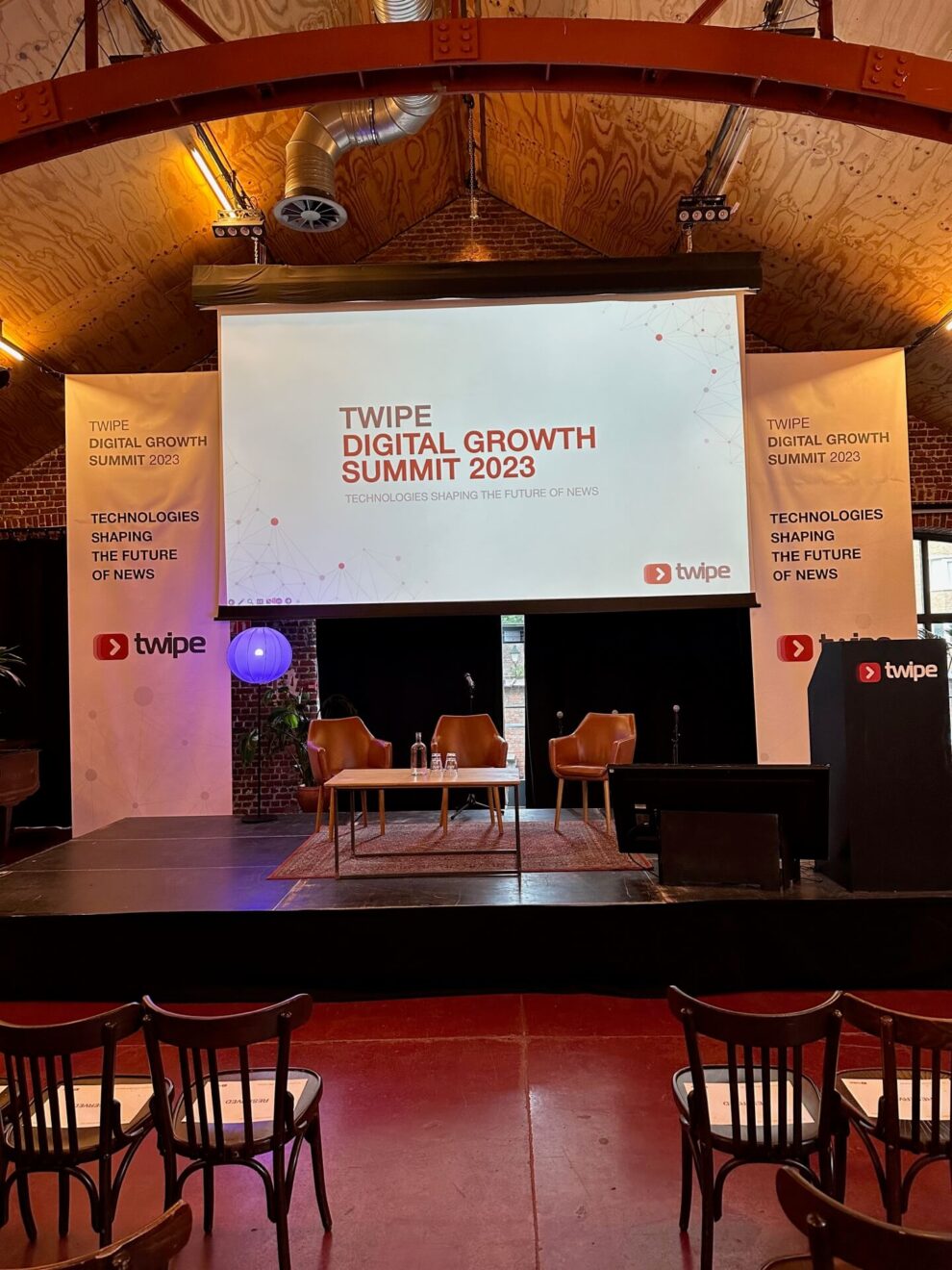
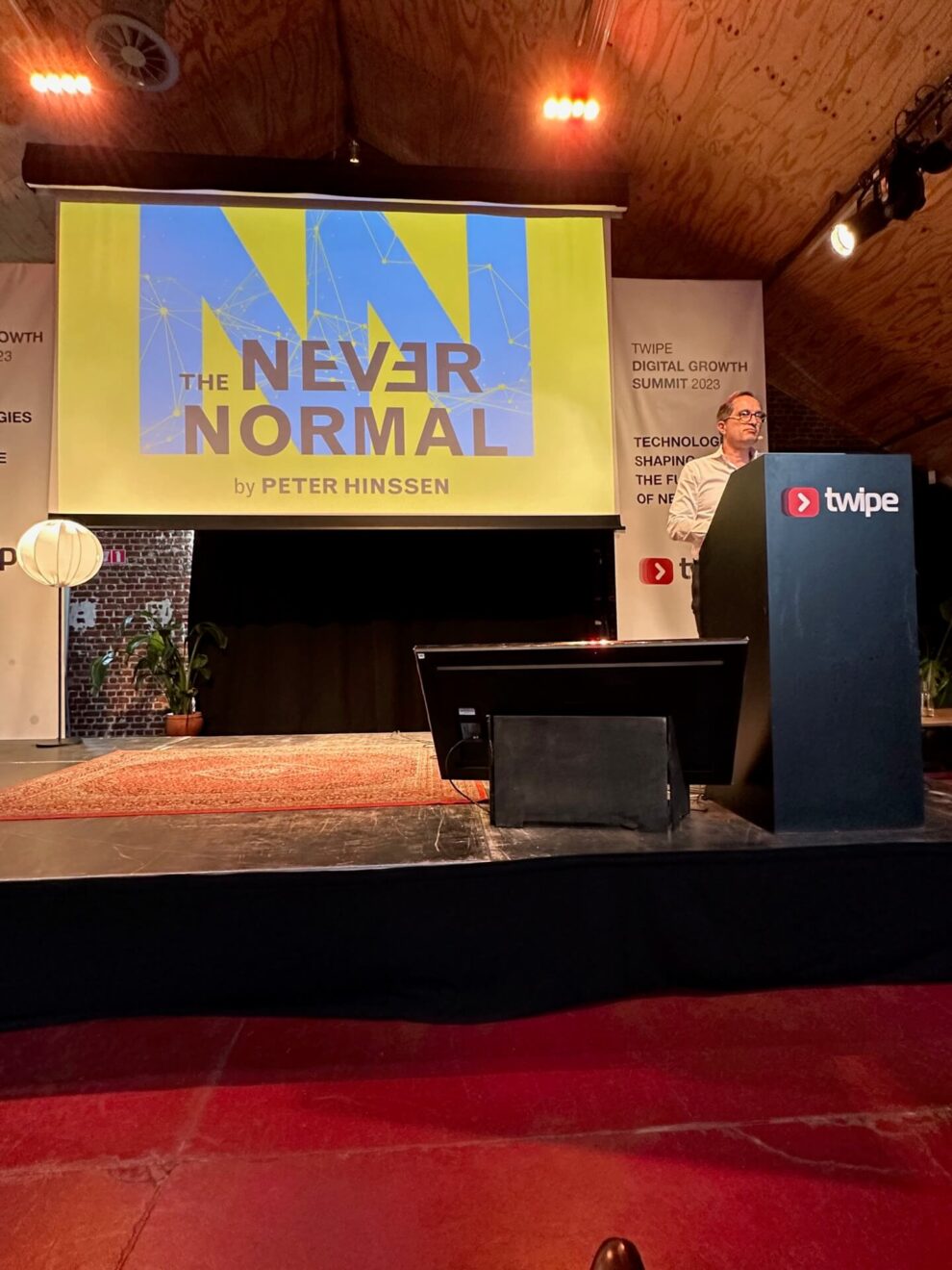


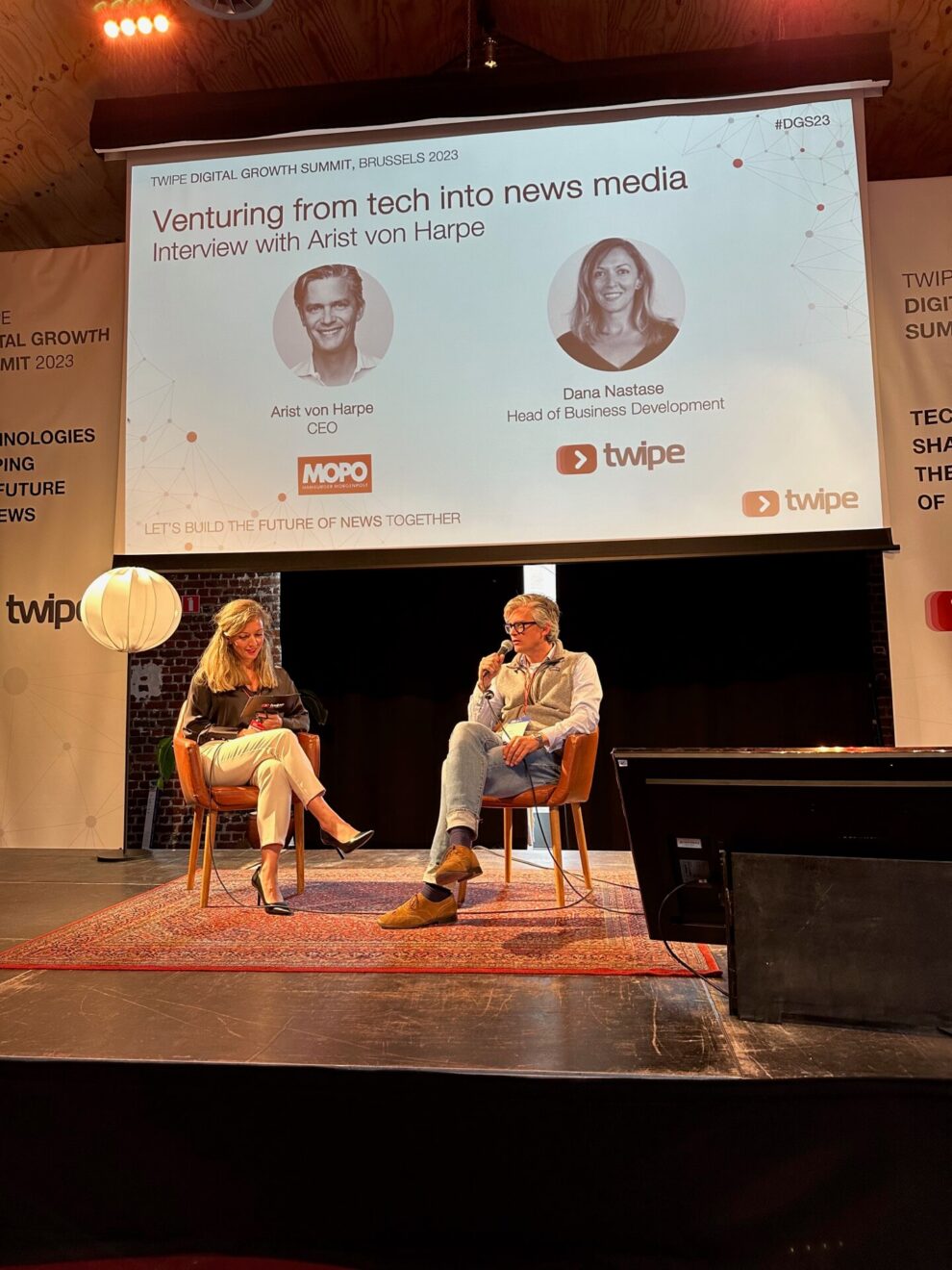
Other Blog Posts

Stay on top of the game
Subscribe to Twipe’s weekly newsletter to receive industry insights, case studies, and event invitations.
"(Required)" indicates required fields

